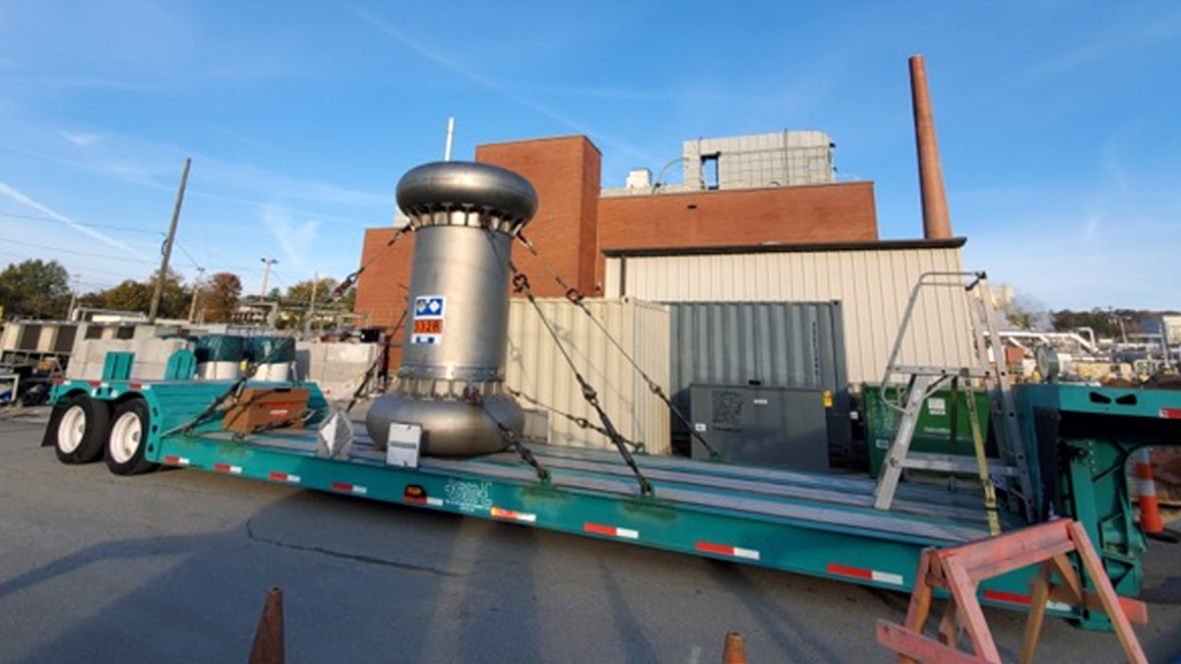ORNL to examine irradiated accident tolerant fuel assemblies

An accident tolerant fuel experiment developed by Global Nuclear Fuel arrives at Oak Ridge National Laboratory for testing. Photo: ORNL
Global Nuclear Fuel (GNF) has announced that irradiated lead test assemblies of its IronClad and ARMOR accident tolerant fuel (ATF) have been delivered to Oak Ridge National Laboratory for examination. The unfueled IronClad rods and fueled ARMOR rods, the first ATF samples to be installed in a commercial reactor, completed a 24-month fuel cycle at the Hatch nuclear plant near Baxley, Ga., in February and were shipped to ORNL in early November.
The test samples, manufactured at GNF’s facility in Wilmington, N.C., are part of an industry-led effort with the Department of Energy to commercialize new fuels that could help boost the performance and economics of U.S. reactors within the decade. Framatome and Westinghouse are also involved in the DOE’s ATF program.
According to GNF’s December 3 announcement, ORNL’s examination of the samples will include visual inspections, microscopy, and measurements of the thickness, corrosion, and other mechanical and material properties of the cladding. These data, GNF said, will be used to determine the performance benefits of the materials and support the licensing of new fuel technologies with the Nuclear Regulatory Commission.
The DOE’s Office of Nuclear Energy noted in a December 4 press release that initial visual inspections of the test samples showed no visible signs of flaws or degradation on either of the assemblies.


